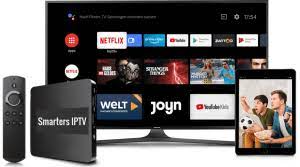In the fast-evolving landscape of digital entertainment, Internet Protocol Television (iptv france) has emerged as a revolutionary technology, reshaping how we consume television content. IPTV refers to the delivery of television content over the internet, as opposed to traditional terrestrial, satellite, and cable formats. This modern approach to broadcasting has brought about significant changes in the industry, offering a wide range of benefits and new possibilities for both providers and consumers.
What is IPTV?
IPTV stands for Internet Protocol Television, a system where digital television service is delivered using the internet protocol over a network infrastructure, typically a broadband connection. Unlike traditional broadcasting methods, which rely on radio waves and cable systems, IPTV uses internet networks to transmit television content. This allows for more interactive and personalized viewing experiences.
Key Features and Benefits
- On-Demand Content: One of the most significant advantages of IPTV is the availability of on-demand content. Viewers can watch their favorite shows, movies, and videos whenever they want, without being tied to broadcast schedules. This flexibility has transformed the way people consume television, aligning it more closely with modern lifestyles.
- Interactive Services: IPTV offers interactive features that enhance the viewing experience. Users can pause, rewind, and fast-forward live TV, access additional information about programs, and even interact with the content through features like voting, gaming, and social media integration.
- High-Quality Video and Audio: With the ability to transmit high-definition (HD) and even ultra-high-definition (UHD) content, IPTV provides superior video and audio quality compared to traditional broadcasting methods. This is particularly appealing to viewers who demand the best possible viewing experience.
- Wide Range of Channels and Content: IPTV platforms often provide a broader range of channels and content compared to traditional cable and satellite services. This includes international channels, niche programming, and exclusive content, catering to diverse tastes and preferences.
- Cost-Effective: IPTV can be more cost-effective for both providers and consumers. Providers can reduce infrastructure and maintenance costs associated with traditional broadcasting, while consumers often benefit from competitive pricing and the ability to choose from various subscription plans.
How IPTV Works
IPTV works by converting television signals into digital data packets, which are then transmitted over an internet connection. These packets are received by a set-top box or compatible device, which decodes the data and displays the content on the television screen. The process can be broken down into three main components:
- Content Acquisition: This involves capturing and encoding television content from various sources, such as live broadcasts, on-demand libraries, and third-party content providers.
- Content Delivery: The encoded content is then delivered over a broadband network to subscribers. This can be done through managed networks, ensuring quality of service (QoS) and reliability, or over-the-top (OTT) delivery, which uses the public internet.
- User Interface: Subscribers access the content through a user-friendly interface on their TV, computer, or mobile device. The interface allows for easy navigation, content selection, and access to interactive features.
Challenges and Future Trends
While IPTV offers numerous benefits, it also faces several challenges. Network congestion and bandwidth limitations can affect the quality of service, particularly during peak usage times. Additionally, regulatory and licensing issues can complicate content acquisition and distribution.
Looking ahead, the future of IPTV is promising, with several trends set to shape its evolution:
- 5G Integration: The rollout of 5G networks promises to enhance the quality and reliability of IPTV services, reducing latency and enabling the seamless delivery of high-definition and interactive content.
- Artificial Intelligence (AI): AI and machine learning technologies are being integrated into IPTV platforms to provide personalized content recommendations, improve user interfaces, and enhance customer support.
- Augmented Reality (AR) and Virtual Reality (VR): The incorporation of AR and VR technologies into IPTV services can create immersive viewing experiences, allowing viewers to interact with content in entirely new ways.
- Expansion of OTT Services: Over-the-top (OTT) IPTV services, which deliver content over the public internet, are expected to continue growing, offering viewers even more choices and flexibility.
In conclusion, IPTV represents a significant advancement in the way television content is delivered and consumed. With its numerous benefits and ongoing technological advancements, IPTV is poised to play a central role in the future of digital entertainment, providing viewers with more control, convenience, and customization than ever before.

